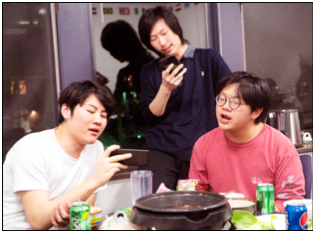By Alaina Shelzi
For decades, playwrights have been using their work to show audiences a piece of history. Whether to point out injustice or highlight success stories, musical theater is the unsung hero of historical storytelling. Modern shows like “Hamilton” and “War Paint,” as well as older shows like “Evita” and “The Sound Of Music,” prove the powerful impact of historical musicals. “Mill Girls,” a historical musical written by St. Michael’s College professor Peter Harrigan, is gearing up to leave its lyrical legacy come November.
“Mill Girls” is an original musical created and directed by theater professor Peter Harrigan, with music composed by friend and local musician Tom Cleary. The show, which opens in November, tells the story of the women working in the factory mills of Lowell, Mass. during the 1800s. The show’s unconventional script is divided between historical diary entries and letters from actual mill workers in the 1800s and Harrigan’s dialogue that tie the scenes together. The women’s hopes, fears, and courage are on display as they relate how their work impacted their lives.
The idea for the show was born when Harrigan was going through pamp

hlets that had been sent to his campus mailbox. One in particular from the Heritage Winooski Mill Museum caught his eye. The mill sounded compelling to Harrigan, who decided to visit the Heritage Museum. During his visit, he was inspired by the class of working women history had forgotten. Looking for more information, he then met with Susan Ouellette, a professor of history at St Michael’s, who contributed to “The Mills at Winooski Falls: Winooski and Burlington, Vermont: Illustrated Essays and Oral Histories,” by Laura P. Krawitt, which consists of letters and other original source material from the 1800s. Ouellette then gave Harrigan another book that led him to write his show about the Lowell Mills, called “The Lowell Offering: Writings by New England Mill Women” by Benita Eisler.
The stories that Ouellette shared with Harrigan told of factories and mills which were growing and faced a shortage of workers. The mills started advertising work to farmers’ daughters.
 “They decided to try and make the mill experience a very wholesome one… mentor them in circumstances their protective fathers would find acceptable and give them a chance to make a little money and have some agency.” said Harrigan. The town of Lowell, where the show takes place, was built around this idea, and for some time this arrangement was working very well.
“They decided to try and make the mill experience a very wholesome one… mentor them in circumstances their protective fathers would find acceptable and give them a chance to make a little money and have some agency.” said Harrigan. The town of Lowell, where the show takes place, was built around this idea, and for some time this arrangement was working very well.
However, Harrigan points out, the mills began exploiting the women so the mills could make more money. “Because of what they had learned and the bonds they had formed, they decided they were going to push back,” Harrigan said. “They were some of the first labor leaders in this country. That was a fairly amazing thing long before women were given the right to vote. ” The women of Lowell started fighting for their rights, and when they figured out that their work was part of the same system of oppression that started with slaves in the South, the mill workers became abolitionists.
In the past, Harrigan has directed other plays that had strong historical ties, such as “Execution of Justice” by Emily Mann, which follows the case of Dan White, the man who murdered San Francisco Mayor George Moscone, and Harvey Milk, the first openly gay city supervisor. Shortly after that play closed on St. Michael’s campus in 1992, there was a police brutality incident in California that made national news. Harrigan said that it was moving to have people come up to him and tell him how seeing the show helped them make sense of the violent acts that had occurred, illustrating how historical productions can help make sense of current events in today’s news.
 “I’m a huge feminist, so I love learning about how real women enacted change that impacted the whole community,” said Emily Chabot ’19, a student performing as Sarah in the production. “Finding out my character was a real woman was really interesting. I love knowing that I’m spreading her message of inclusiveness and empowerment for women.”
“I’m a huge feminist, so I love learning about how real women enacted change that impacted the whole community,” said Emily Chabot ’19, a student performing as Sarah in the production. “Finding out my character was a real woman was really interesting. I love knowing that I’m spreading her message of inclusiveness and empowerment for women.”
 When deciding to write a musical, which had always been a dream for Harrigan, he knew the work was going to be historical. While Harrigan is the playwright of “Mill Girls,” that’s not how he would choose to classify himself. “It’s weird for me to think of myself as a writer,” he said. “I really think of myself as an artist who really draws together certain elements and, hopefully, finds interesting relationships between them. I think the script is an extension of that, a reflection of that.”
When deciding to write a musical, which had always been a dream for Harrigan, he knew the work was going to be historical. While Harrigan is the playwright of “Mill Girls,” that’s not how he would choose to classify himself. “It’s weird for me to think of myself as a writer,” he said. “I really think of myself as an artist who really draws together certain elements and, hopefully, finds interesting relationships between them. I think the script is an extension of that, a reflection of that.”
In creating “Mill Girls,” Harrigan collaborated with Tom Cleary, who orchestrated the music for the show. Just as the words echo the voices of the past, so too does the music. “In some songs, I’ve taken poems from anonymous sources and written music to them while keeping the texts pretty much in their original form,” Cleary said. With some music, like the song “Factory Girl,” Cleary takes some creative liberties. In this song, Cleary added his “own ending which brings the story into the world of the Mill Girls and their process of political consciousness-raising,” making the piece more relevant to the story being told.

 Cleary’s main hope is “that the music helps bring the listener into the world of the Mill Girls, but with a sense of heightened, stylized reality that includes aspects of modern harmony and melody.”
Cleary’s main hope is “that the music helps bring the listener into the world of the Mill Girls, but with a sense of heightened, stylized reality that includes aspects of modern harmony and melody.”
As for Harrigan’s hopes for the show? Just like Mill Girls itself, they are a passionate assortment of thoughts, “I hope it’s entertaining and poignant but also makes people think.”
“Mill Girls” runs November 2, 3, 4, 10 and 11 at 7 p.m. The show is open to the public and admission is free


